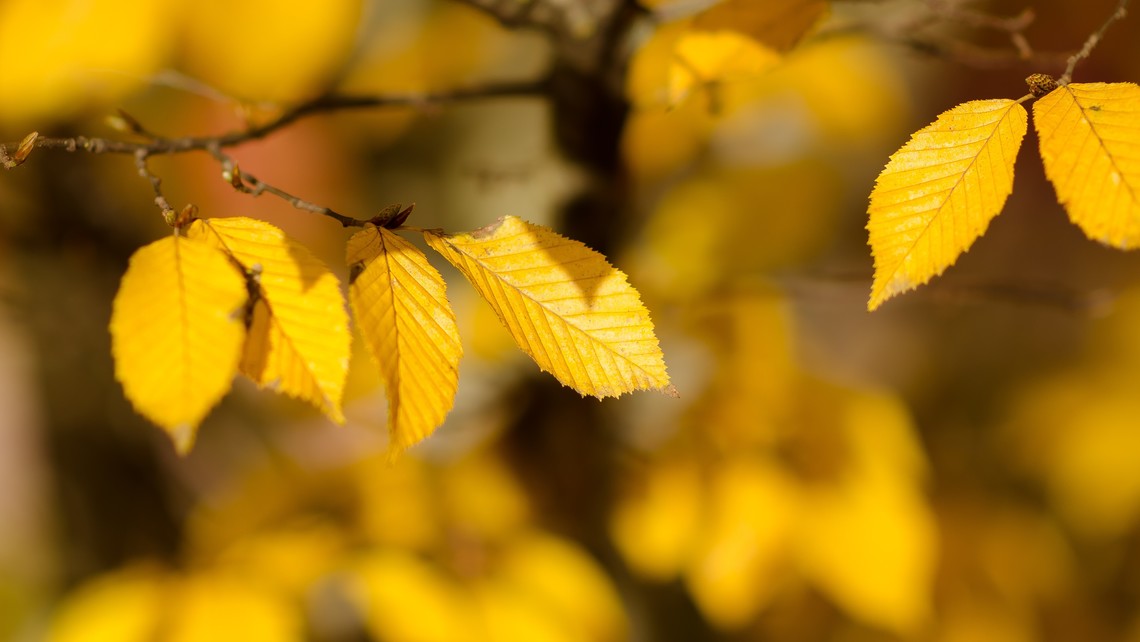
Fall color change in central Texas may not have quite the grandeur of the New England area, but its less frequent occurrences can create an even more stark contrast and make a greater impression upon us.
I’m often asked about the reasons for this mysterious color transformation. I will provide the basic scientific explanation for this and list many of the native and naturalized species of trees (non-natives that are a very positive addition to the total tree species in central Texas) that contribute to dramatic fall brilliance in the Texas Hill Country.
First, why are leaves green? It is a result of a pigment called chlorophyll, which captures solar energy and employs it in the production/photosynthesis of carbohydrates/sugar (i.e., tree energy or tree food). This “energy factory”, if you will, occurs almost exclusively in the leaf, and other pigments are also in play in lesser amounts during photosynthesis. Spurred by the shortening of the daylight hours and temperature decline, various plant growth hormone changes occur and leaf senescence—or the programmed plant-leaf aging process—enters its last stages for deciduous trees (tree species that lose their leaves every fall).
Due to less sunlight energy, less chlorophyll is produced and the leaves begin to turn golden or brown.
The diminishing chlorophyll, the amount of sugar, and the amount of the two other pigments in play in photosynthesis—anthocyanins (reds & purples) and carotenoids (yellows and oranges)—are the main factors causing the color changes. So, the more sugar and the higher concentrations of either of the two remaining pigments causes the peak color purity and color brilliance. Other factors include: 1) the latitudinal and longitudinal coordinates, 2) elevation above sea level, 3) geographical setting (best color tends to be found within valleys or ravines near creeks or rivers), 4) yearly rainfall amount the previous year and that year and final month, 5) availability of macro and micro nutrients, 6) the timing, duration, and depth of first cold front/northerly freezes, 7) tree species and 8) the individual hereditary traits of that particular tree. Finally, to increase the chances of good color, the use of a fall tree fertilizer and ensuring ample water will increase the chances of longer and higher quantity of sugar production and the capacity for the tree to create ample amounts of the other pigments needed. Healthier trees are more likely to have better color.
As a disclaimer, the species with corresponding colors are the typical colors displayed, but there are always exceptions. Of note is a small area I’ve visited with Cedar Elms displaying more red than the typical yellow, and often many of the trees go through phases of each color being displayed in stages (yellow to orange to red). Also, a rare phenomenon in a sparse amount of Live Oaks occurs where they will change into crimson, scarlet, then purple hues! These are by no means comprehensive, but the hope is that it piques and renews interest in more seasonal color-representative tree species being planted.
Natives
Spanish Red Oak (multi), Cedar Elm (yellow), Blackjack Oak (red/purple), Bigtooth Maple (multi), Escarpment Black Cherry, (yellow), Bigleaf & Littleleaf Walnut (yellow), Texas Ash (yellow then scarlet then purple!), Flameleaf Sumac (multi)
Naturalized
Shantung Maple (multi), Caddo Maple (multi), Mexican Sugar Maple (multi), Silver Maple (multi), Drummond Red Maple (scarlet), Amur Maple (multi), Trident Maple (multi), Chinese Pistache (multi), Shumard Red Oak (scarlet)



